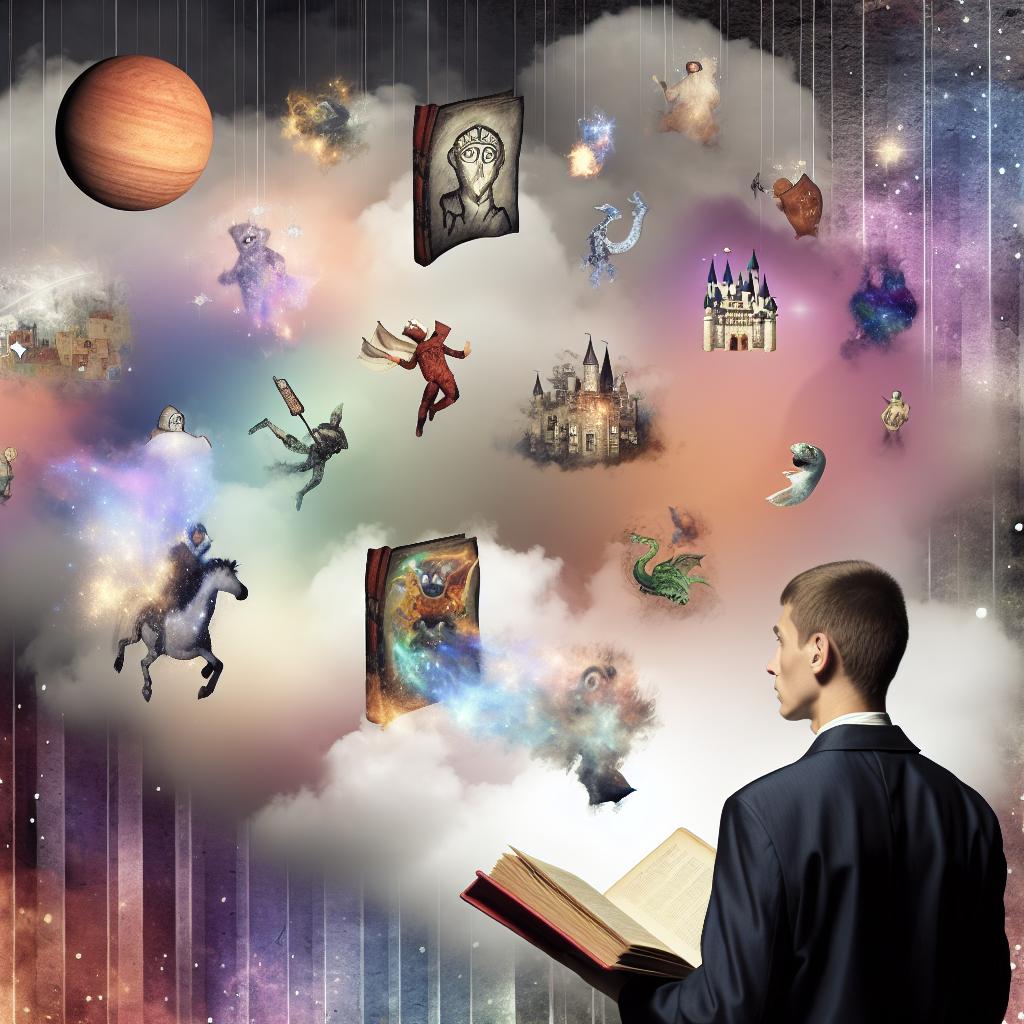The Connection Between Fantasy and Dreams

The Connection Between Fantasy and Dreams
The relationship between fantasy and dreams is a fascinating subject that combines elements of psychology, neuroscience, and cultural studies. Both concepts pertain to experiences that occur primarily within the mind, yet they possess distinct characteristics and serve different psychological functions. This exploration requires a deeper understanding of the unique and shared qualities of both phenomena and how they impact the human experience.
Understanding Dreams
Dreams are predominantly a nighttime experience comprised of thoughts, images, and sensations that take place in an individual’s mind during sleep. According to the American Sleep Association, these phenomena, while not entirely understood, are believed to be integral to emotional processing and memory consolidation. They primarily occur during the sleep phase known as rapid eye movement (REM), during which brain activity closely mirrors that of being awake.
Numerous theories have emerged over time to explain why we dream. Sigmund Freud posited that dreams serve to fulfill repressed desires and unexpressed wishes held by the unconscious mind. This view suggests that dreams act as a safe outlet for otherwise socially unacceptable instincts and desires. In contrast, Carl Jung viewed dreams as a window into the unconscious, offering insights into unresolved conflicts and hidden aspects of the psyche, allowing for greater self-awareness and comprehension of the self.
Furthermore, contemporary research into dreams delves into biological and evolutionary functions, suggesting that dreams have a role in simulating threats and rehearsing response strategies as a survival mechanism. These interpretations highlight the complexity and layered functionality of dreaming as part of the human cognitive landscape.
Exploring Fantasy
Fantasy, distinct from dreams, is born from conscious imagination and creativity. It involves constructing captivating scenarios and narratives unrestricted by the limitations of reality. According to the Cognitive Fantasy Theory, the human capacity for abstract thinking and creativity gives rise to fantasy, enabling individuals to explore possibilities and envision alternate realities.
Fantasy serves multiple roles; while it can act as a form of escapism, providing a temporary break from the constraints of the everyday world, it is also essential for innovation and problem-solving. Fantasizing allows individuals to mentally experiment with different scenarios and hypothetical outcomes, fostering personal growth and development in both individual and collaborative settings.
Moreover, fantasy contributes to emotional regulation by allowing individuals to create and manipulate imagined experiences that can provide comfort, inspiration, and motivation. Through these imagined scenarios, individuals can test boundaries, develop narratives that foster resilience, and explore feelings in a controlled mental environment.
The Overlap Between Fantasy and Dreams
Despite their differences, fantasy and dreams exhibit several similarities. Both involve the mental generation of vivid imagery and scenarios detached from events happening in immediate reality. Brain regions active during dreaming, such as the limbic system, are also involved in the imaginative processes underpinning fantasy.
Neuroscientific research indicates that dreaming and conscious fantasy share overlapping neuronal circuits. Studies published in journals like Nature Reviews Neuroscience suggest that the default mode network, a region related to self-referential thought and creativity, remains active during both dreaming and conscious imagination. This overlap provides clues into how certain aspects of consciousness operate across different mental states.
Psychological Functions
Both fantasy and dreams provide notable psychological benefits. These mental processes offer a secure environment for emotional processing, fear exploration, and experimentation with various parts of one’s identity. In therapeutic contexts, guided imagery and dream analysis techniques are often used to help individuals navigate their internal landscapes and gain deeper insights.
While dreams provide insights through metaphorical and ambiguous narratives, fantasies are more deliberately structured and intentional. Both these mental experiences enable the exploration of complex emotions and foster coping mechanisms and resilience by supplying alternative perspectives on reality, enabling individuals to circumvent obstacles and view challenges as surmountable.
In literature and media, fantasy and dreams frequently intersect, serving as compelling devices for narrative exploration. Fictional works often blur the lines between the two, presenting dreams as gateways to fantastical realms. This technique allows authors to provide commentary on larger social and personal issues through allegory and symbolism, enhancing the reader’s engagement with complex themes and human experiences.
Renowned authors have adeptly utilized this interplay between dreams and fantasy to craft stories that resonate deeply with audiences, highlighting the timeless allure and power of these mental phenomena. By exploring complicated themes such as identity, morality, and the nature of reality, these creative works leverage the limitless boundaries of fantasy and dreams to probe the intricacies of the human condition.
Conclusion
The connection between fantasy and dreams showcases the complexities inherent in human cognition and emotion. By examining both conscious and unconscious exploration, these mental experiences provide profound insights into the human condition. As scientific and psychological inquiry continues to delve into the mysteries of the mind, the dynamic interplay between fantasy and dreams invites ongoing exploration and understanding.
To further engage with the intricacies of dreams and fantasy, seeking out academic journals, attending conferences focused on psychology and neurology, and participating in discussions could provide valuable insights. These resources assist in deepening one’s comprehension of how the human mind navigates the boundaries that separate, intersect, and transcend reality through both dreams and imagination.
Comments are closed.
Comments on 'The Connection Between Fantasy and Dreams' (0)
Comments Feed